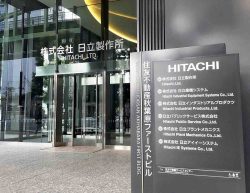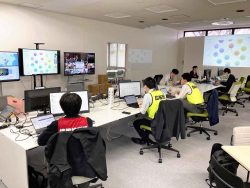Japan Telecoms Rush to Launch Satellite-to-phone Services; Starlink Used for Emergency Internet in Noto
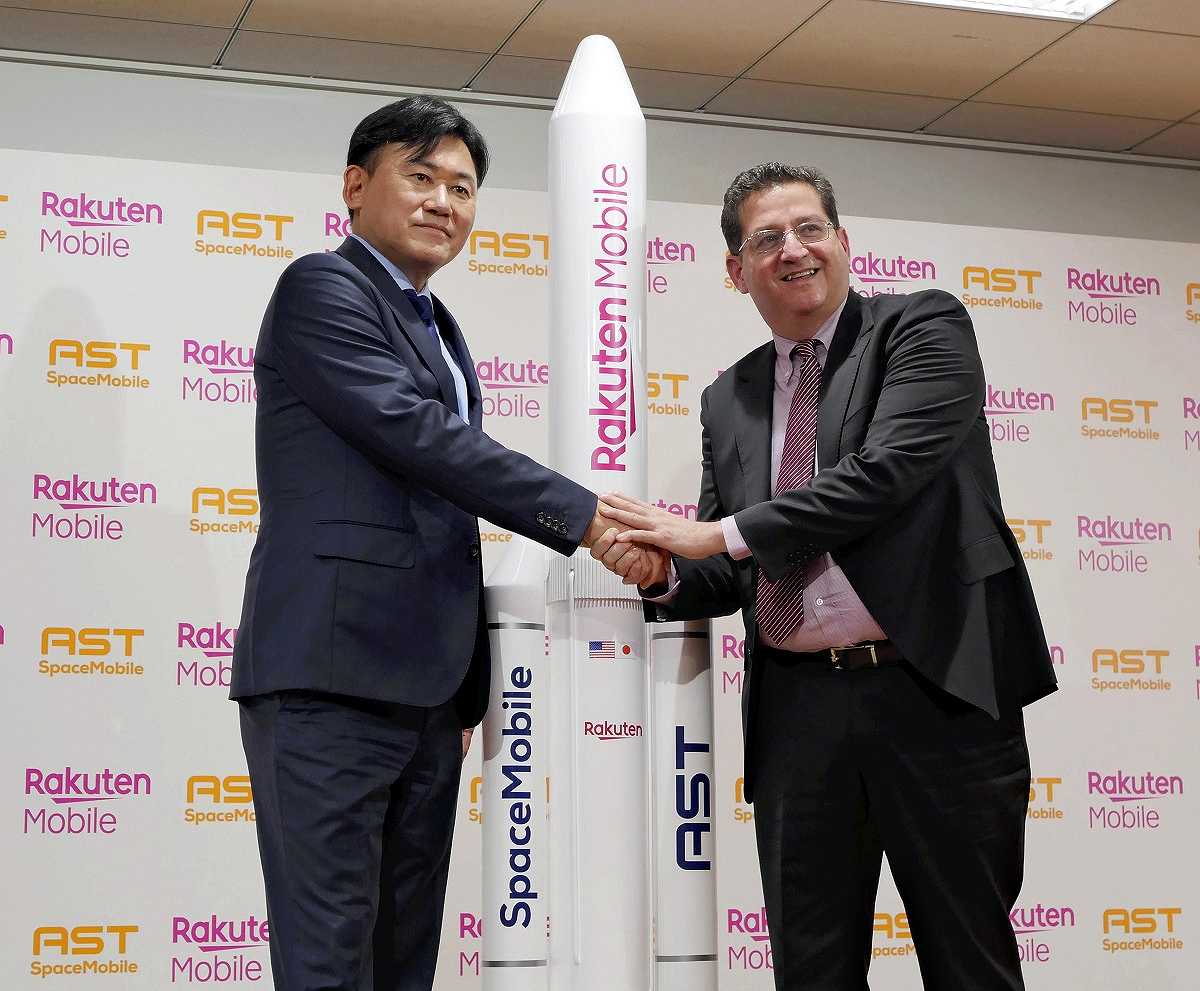
Hiroshi Mikitani, left, chairman of Rakuten Mobile Inc., and Abel Avellan, chairman and CEO of AST SpaceMobile Inc., shake hands in Setagaya Ward, Tokyo, on Friday.
15:11 JST, February 17, 2024
Leading telecom companies are rushing to launch communication services that directly connect smartphones to satellites.
Rakuten Mobile Inc. announced Friday that it will start offering a satellite-to-phone service that can also be used for voice calls on smartphones as early as 2026. The service is expected to provide a connection anywhere in the country, including in mountainous regions and offshore, where it is difficult to build base stations, and it could prove useful in a natural disaster.
KDDI Corp. also plans to launch a satellite-to-phone service for text messaging.
Such satellite-based services do not require a dedicated receiver, and can be accessed with just a smartphone.
For the Rakuten Mobile service, the company will use satellites from AST SpaceMobile Inc., a U.S. startup company that has been invested in by the Rakuten Group.
AST SpaceMobile has launched two test satellites into low-earth orbit at an altitude of about 500 kilometers. Because these satellites orbit lower than geostationary satellites, they can provide communications with less delay. The company plans to have as many as 90 satellites operating in the future.
At a press conference on Friday, Rakuten Mobile Chairman Hiroshi Mikitani said, “Our customers will be able to enjoy mobile connectivity across Japan, even offshore or aboard an airplane.”
Meanwhile, KDDI, which has gotten out ahead by providing access to Starlink, a satellite-based communication network from U.S. company SpaceX, will launch its text messaging service as early as this year.
Starlink currently requires a dedicated terminal, but last month SpaceX successfully launched six satellites that allow smartphones to connect to them directly.
In the telecom industry in recent years, interest has grown in non-terrestrial networks, such as space-based services.
Such services not only allow for expanded coverage to places that would otherwise be difficult to reach, but also are expected to be used in natural disasters.
After the recent Noto Peninsula Earthquake, Starlink was used for emergency restoration of base stations and to provide internet at disaster shelters.
For their part, NTT Docomo Inc. and SoftBank Corp. are looking to commercialize high-altitude platform stations, or HAPS. These stations are large unmanned aircraft that stay in the air at an altitude of about 20 kilometers, from where they send out radio signals.
NTT Docomo is currently testing direct links between HAPS and smartphones, and expects to launch a HAPS mobile service in fiscal 2025.
However, a framework for space- and air-based services is still being hammered out. The frequency bands to be used for the services are expected to be discussed at an international conference, and the Internal Affairs and Communications Ministry is considering technical requirements.
"Business" POPULAR ARTICLE
-
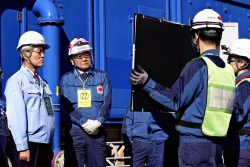
Keidanren Chairman Yoshinobu Tsutsui Visits Kashiwazaki-Kariwa Nuclear Power Plant; Inspects New Emergency Safety System
-
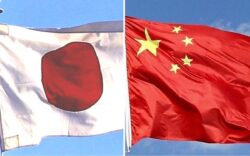
Imports of Rare Earths from China Facing Delays, May Be Caused by Deterioration of Japan-China Relations
-

University of Tokyo Professor Discusses Japanese Economic Security in Interview Ahead of Forum
-

Japan Pulls out of Vietnam Nuclear Project, Complicating Hanoi’s Power Plans
-

Govt Aims to Expand NISA Program Lineup, Abolish Age Restriction
JN ACCESS RANKING
-

Keidanren Chairman Yoshinobu Tsutsui Visits Kashiwazaki-Kariwa Nuclear Power Plant; Inspects New Emergency Safety System
-

Imports of Rare Earths from China Facing Delays, May Be Caused by Deterioration of Japan-China Relations
-

University of Tokyo Professor Discusses Japanese Economic Security in Interview Ahead of Forum
-

Japan Pulls out of Vietnam Nuclear Project, Complicating Hanoi’s Power Plans
-

Govt Aims to Expand NISA Program Lineup, Abolish Age Restriction


